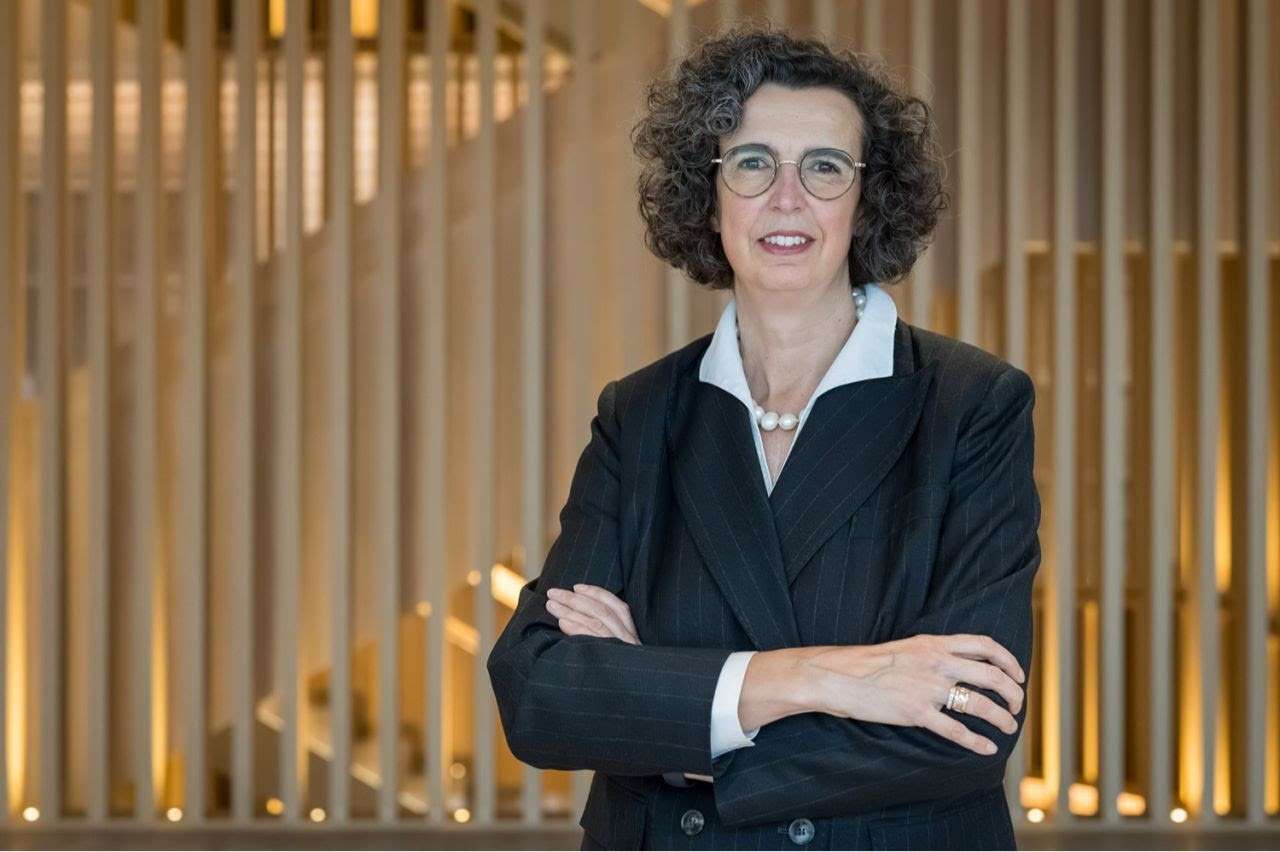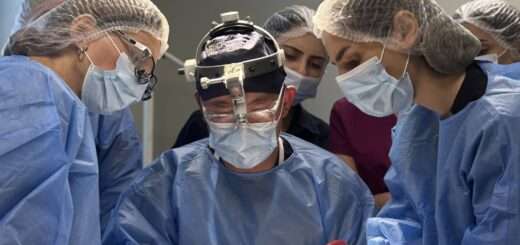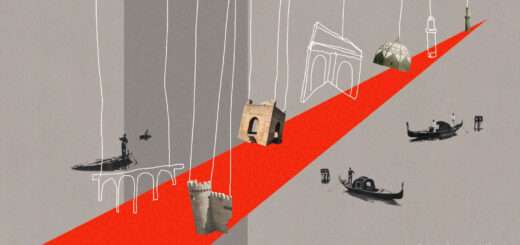“I am also inspired by the resilience and creativity of Armenians – it shows in business, culture and daily life”։ EBRD Managing Director Elisabetta Falcetti

Armenia today and in the future: is our country resilient enough to face regional and global economic challenges? An exclusive interview with Ms. Elisabetta Falcetti, EBRD Managing Director for Turkiye & Caucasus, by ejc.am on a number of interesting and important issues.
– Ms.Falcetti, You visited Armenia last year have you observed any changes and developments in the country?
-Yes, this is my second official visit in Armenia, but I have also visited Armenia as a tourist several years ago and what impresses me most is the tangible progress everywhere you look. Over the past decade, Armenia has progressed vastly by laying the foundations of reforms to visibly modernising its economy. You see it in the infrastructure, such as new roads, upgraded streets, use of renewable energy, updated municipal infrastructure. This time I also travelled to Gyumri where I visited the Impact Hub to learn more about inclusiveness and the challenges of refugee integration. The city has changed dramatically and is becoming a vibrant tourist destination. I also wanted to see in person the impact of our street rehabilitation project in Gyumri where we helped to introduce street lighting and road safety. During the drive I was happy to see many solar panels on individual houses and was impressed by a very good road infrastructure. So yes, I see many tangible and positive developments in the capital and the regions and in the economy at large. The progress is also visible with advancement of the financial institutions sector, construction sector, IT sector and rise of entrepreneurship, which has always been the strong backbone of Armenia. I am proud to say EBRD played an important role in supporting these developments. Armenia’s development is a daily reality of better opportunities, stronger institutions, and an economy that is becoming greener, more resilient, inclusive and better connected to the world.
-Tell us a little more about the Refugee Response Window. How does it address challenges refugees face in accessing finance?
-The programme was designed with inclusivity in mind. All projects supported through this programme create jobs and services that benefit both refugees and host communities. The Refugee Response Window is a joint initiative by the EBRD and the EU designed to support the social and economic integration of refugees. By providing access to finance, risk-sharing mechanisms, and tailored capacity-building, the programme adds many economic incentives that enables refugees to start businesses, access jobs, and build stable lives. This not only transformative to their livelihood but also brings fresh opportunities to the local community. Once you have many projects deployed for the next few years it will have compound effect to the society and the economy of Armenia. For example, when a refugee entrepreneur opens a business with programme support, local residents are hired, and the wider community gains access to new products and services. This helps reduce tension, builds trust, and strengthens social cohesion. The programme has a broad reach but is particularly impactful in agriculture, small manufacturing, and services. Many refugees bring skills in these areas. By supporting them with loans, mentorship, and technical know-how, the programme helps revive rural economies, improve food security, and generate new business opportunities that Armenia needs. Refugees often lack collateral or a credit history, making traditional loans out of reach. The Refugee Response Window removes these barriers by offering important incentive grants, encouraging them to lend to refugee-led businesses. Women and young refugees are also a central focus. The programme also provides targeted training for youth to gain vocational skills, ensuring the next generation has pathways to employment and independence. The next steps include scaling up financing opportunities, and deepening partnerships with local banks to deliver sustainable, long-term impact.
-The EBRD has been present in Armenia for many years. How would you describe your role in the country’s economy?
-The EBRD is one of Armenia’s largest institutional investors. We have invested about €2.5 billion across hundreds of projects in sectors ranging from banking and infrastructure to renewable energy and small businesses. Our role is not just about financing but also about introducing international best practices, strengthening governance, and helping Armenia’s economy integrate with global markets. We have a diversified portfolio. In infrastructure, our financing has helped modernise roads, renewable energy, municipal infrastructure. In the private sector, we have supported agribusiness, manufacturing, and IT companies, while our work with local banks has improved access to finance for thousands of SMEs. We also play a leading role in the green transition, with significant investments in renewable energy and energy efficiency.
One of our strongest partnerships is with Armenia’s financial institutions. Through local banks, we channel funding to small and medium-sized enterprises, farmers, and entrepreneurs who otherwise may not have access to finance. We also bring in risk-sharing mechanisms, technical assistance, and know-how to ensure the financial sector remains resilient, transparent, and inclusive. SMEs are the backbone of Armenia’s economy. Through our programmes, we’ve enabled thousands of SMEs to access finance, advisory services, and training. This has allowed local companies to modernise operations, adopt new technologies, expand exports, and create jobs. Many businesses we supported a decade ago are now leading exporters and major employers. We operate on both levels. We also play an important role in reform implementation. For example, the Investment Council of Armenia (IC Armenia), supported by the EBRD and the UK Government, plays a pivotal role in advancing legislative reforms through a public-private dialogue platform led by the Deputy Prime Minister. The Council focuses on identifying and addressing regulatory barriers faced by SMEs, using expert analysis and stakeholder engagement. Over 45 reforms have been implemented, targeting areas such as VAT reporting simplification, transfer pricing, and sector-specific regulatory improvements. Also our recently launched Capital Market Support Programme, supported by the EBRD and the EU, aims to strengthen Armenia’s local capital markets by supporting corporate issuers of bonds and equity. The programme addresses very important challenges, suchs as limited expertise in capital market financing and high issuance costs. It offers capacity-building, advisory services, and grant co-financing for expenses like legal and listing fees. Implemented with partners such as Galt & Taggart and Ameria Advisory, the CMS Programme also includes diagnostics, workshops, and a dedicated online platform to guide companies through the issuance. So as you can see, on one hand, we finance major national infrastructure projects that improve connectivity, energy security, and water supply. On the other hand, we directly support small businesses, women entrepreneurs, and regional farmers. This balance ensures that growth is inclusive, reaching both big cities and remote rural communities.
-Armenia faces regional and global economic challenges. Do you think its resilient enough to face future challenges?
-Short answer: Yes — Armenia has significant resilience, and this has been demonstrated over past 5 years, but it’s not fully immune.
Armenia is materially more resilient to regional shocks than in the past. However, continued vigilance, faster progress on export diversification, energy independence/security and sustained external support are still needed because geopolitical and external-demand risks remain elevated.
Armenia has made significant institutional improvements that helped to increase its ability to absorb economic and political shocks and improve investor confidence. A prudent central bank policies, a well-capitalised banking sector reduces the chance that a regional shock becomes a domestic financial crisis.
We have consistently adapted our support to Armenia’s needs—whether during the global financial crisis, the pandemic, or the recent refugee inflows. By combining finance, policy dialogue, and technical cooperation, we’ve helped Armenia strengthen its institutions, diversify its economy, and remain competitive in a very challenging environment.
We also observe strong private sector dynamism. Armenian entrepreneurs are a key resilience channel: SMEs are numerous, often lean and rapidly adjust business models (export diversification, digitalisation, services). Armenia’s economy has been buoyed by robust private sector activity, supported by EBRD investments in SMEs, trade finance, and entrepreneurship. Over 83% of EBRD’s cumulative €2.5 billion investment in Armenia has gone to the private sector.
Strategic projects such as the Sisian-Kajaran road, modernisation of border crossing infrastructure and the Syunik and Yerevan customs and logistics centre are enhancing Armenia’s trade connectivity and export capacity
Armenia is also accelerating its green economy shift, with landmark projects like the Masrik Solar Power Plant, the first utility-scale solar facility in the Caucasus
Looking ahead, what are the EBRD’s priorities in Armenia for the next decade?
The EBRD will continue to support Armenia’s development through investment and policy dialogue.
Our strategy’s first priority is to enhance the inclusivity and competitiveness of the private sector by improving financial intermediation, providing targeted support for small and medium-sized enterprises, as well as refugees and host communities, and fostering trade diversification.
The second priority is to invest in sustainable infrastructure with a view accelerating the green economy transition. This will include financing energy-efficiency initiatives, expanding the EBRD’s Green Cities programme and enhancing energy security with an emphasis on renewable energy solutions.
We plan to expand investments in renewables, sustainable transport, and climate resilience, while also supporting Armenia’s growing tech and innovation ecosystem. At the same time, we will continue backing SMEs, women and youth-led businesses, and programmes like the Refugee Response Window to ensure growth benefits all segments of society.
The recent peace agreement between Armenia and Azerbaijan, coupled opportunities for regional connectivity, is seen as a catalyst for regional economic integration and growth. EBRD views this as an opportunity to deepen its engagement in infrastructure and trade facilitation.
-And as a final question, what is it that you like most or captivates you most in Armenia?
-What I love about Armenia is how it feels both ancient and young at the same time. History everywhere but also so much energy for the future. I am also inspired by the resilience and creativity of Armenians – it shows in business, culture and daily life.





